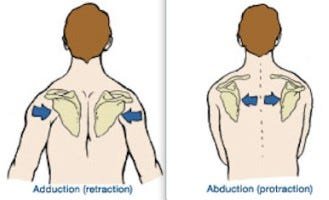Creatine 101: Navigating the Basics
Creatine, a naturally occurring compound found in certain foods and synthesized within the body, has become a cornerstone in the fitness world. Its primary function lies in energy production during high-intensity activities by replenishing adenosine triphosphate (ATP), the body's energy currency.
Proper Dosage: A Shift in Perspective
Traditionally, creatine supplementation has involved a loading phase, where individuals consume higher doses for a brief period before settling into a maintenance phase. However, recent research challenges this approach. Current findings suggest that a loading phase may not be necessary, and individuals can achieve optimal creatine levels through a consistent, lower daily dosage—typically in the range of 3-5 grams.
Safety First: The Gold Standard of Supplements
Creatine's safety profile is unparalleled in the world of supplements. Extensive research supports its long-term use, with minimal side effects, often limited to mild gastrointestinal discomfort in some users. As a testament to its safety, creatine has become a staple not only for athletes but also for those seeking a reliable and risk-free supplement to enhance their overall well-being.
Sarcopenia and Creatine: Defying the Aging Process
Before delving into creatine's role, let's understand sarcopenia. Sarcopenia is the age-related loss of muscle mass and strength, a condition that can significantly impact an individual's mobility, independence, and overall quality of life. The synergy between creatine supplementation and resistance training proves instrumental in preserving muscle mass, strength, and functional capacity in the elderly. This not only addresses the physical aspects of aging but can also contribute to a higher quality of life by reducing the risk of falls and fractures associated with muscle weakness.
Defying the Aging Process: A Boost for Bone Density
In the quest to defy the aging process, creatine's benefits extend beyond muscle preservation. Recent research suggests a positive association between creatine supplementation and improved bone health in the elderly. While the effects may not be pronounced with low doses and without resistance training, higher doses and the implementation of an appropriate resistance training program could prove to be the missing link. The potential for enhanced bone density adds another layer to creatine's role in promoting overall skeletal health, complementing its established benefits in muscle preservation.
Unlocking Strength: The Synergy of Creatine and Strength Training
When it comes to maximizing strength gains and optimizing performance, few natural combinations prove as potent as creatine supplementation paired with strength training. This dynamic duo has garnered attention and acclaim for its remarkable synergistic effects, offering a multitude of benefits that go beyond what either element can achieve in isolation.
1. Enhanced Muscle Creatine Phosphate Stores:
Creatine is stored in muscles as creatine phosphate, a crucial component in the rapid production of adenosine triphosphate (ATP), the primary energy currency of cells. Supplementing with creatine increases the muscle's creatine phosphate stores, enabling more rapid and sustained energy production during high-intensity activities such as strength training. This heightened energy availability translates into increased power and endurance, allowing for more prolonged and intense training sessions.
2. Improved Strength and Power Output:
Strength training aims to stimulate muscle growth and increase power and force production. Creatine supplementation complements these goals by enhancing the muscle's ability to generate energy, leading to improved strength and power output. Athletes and fitness enthusiasts often experience an increase in the number of repetitions they can perform and the amount of weight they can lift, ultimately contributing to more significant gains in muscle mass and overall strength.
3. Faster Recovery and Reduced Fatigue:
Intense strength training sessions can induce muscle fatigue and delayed onset muscle soreness (DOMS). Creatine's role in replenishing ATP rapidly aids in recovery between sets and workouts. Individuals supplementing with creatine often report reduced muscle soreness, allowing for quicker return to training and overall better adherence to a consistent training routine.
4. Increased Lean Muscle Mass:
Strength training, combined with creatine supplementation, becomes a potent catalyst for muscle growth. The increased workload and enhanced recovery provided by creatine contribute to the development of lean muscle mass. This not only improves physical appearance but also boosts metabolism, promoting a more efficient calorie burn and supporting long-term weight management goals.
5. Adaptations at the Cellular Level:
Creatine's impact extends beyond immediate energy production. It triggers cellular adaptations, such as increased water content in muscle cells (cell volumization), which creates an optimal environment for muscle growth. Additionally, creatine has been shown to promote the synthesis of certain proteins involved in muscle repair and hypertrophy.
6. Versatility in Training Modalities:
Whether engaged in traditional weightlifting, bodyweight exercises, or a particular sport, creatine proves versatile in enhancing various forms of training and sports performance. Its benefits are not limited to a specific training style, making it a valuable asset for individuals pursuing diverse fitness and athletic goals.
Unlocking Cognitive Potential: Creatine and Brain Health
Beyond its physical benefits, creatine's influence extends to the realm of cognitive function and brain health. Recent studies suggest that creatine supplementation may enhance memory, attention, and overall cognitive performance. The neuroprotective properties of creatine make it a promising avenue for preventing neurodegenerative diseases and addressing age-related cognitive decline.
Conclusion
In the realm of supplements, few have endured the scrutiny of time like creatine. With over 30 years of rigorous research vouching for its safety and effectiveness, there's practically no reason not to consider creatine as a fundamental part of your routine.
To sum it up, creatine's established history includes muscle preservation, potential cognitive benefits, improvements in bone health and an enhancement in physical performance when coupled with strength training. With a safety profile that stands out, creatine monohydrate emerges as a straightforward choice for those seeking its benefits.
In essence, creatine isn't a miracle worker; it's a tried-and-true companion, helping you inch closer to your health and fitness goals by contributing to a healthier, stronger, and more resilient you.











